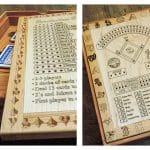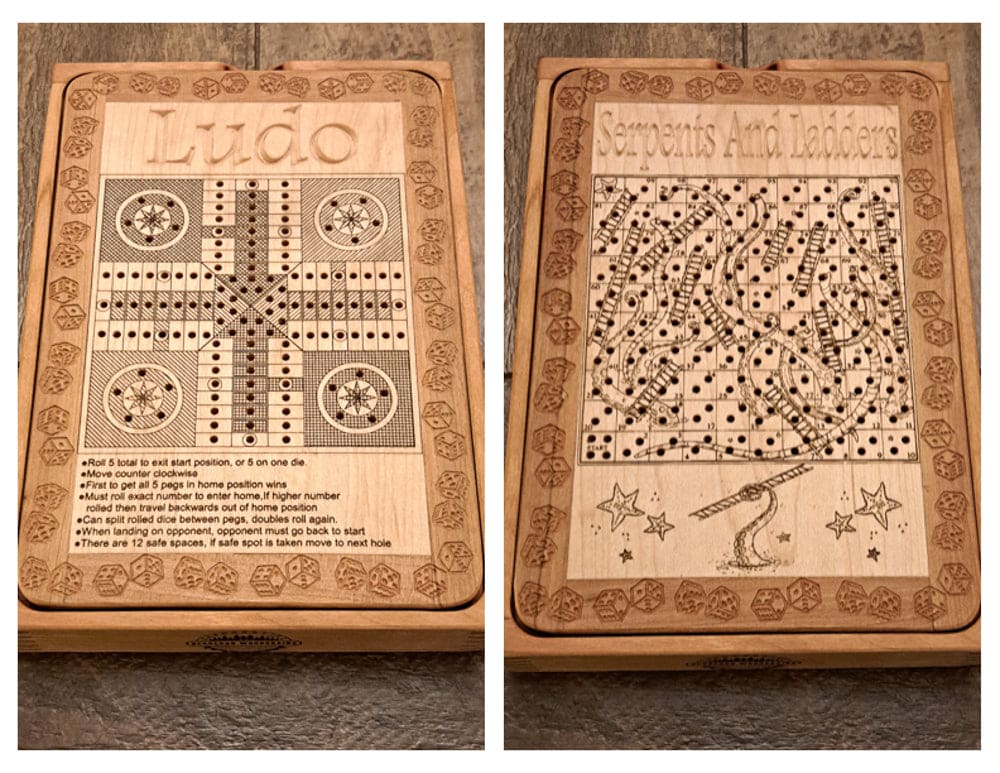Free Shipping On Orders Over $150 To Canada And US
Rummy 500 Rules
RUMMY 500 RULES
OBJECTIVE OF RUMMY 500: To be the first player to earn a total of 500 points (for longer games, play to 1000).
NUMBER OF PLAYERS: 2-8 Players
NUMBER OF CARDS: Standard 52 card deck (Joker is optional)
RANK OF CARDS: A (15 points), K-Q-J (10 pts),10,9,8,7,6,5,4,3,2
TYPE OF GAME: Rummy
THE DEAL:
500 Rummy is typically played with 52 card deck plus the 2 Jokers for a total of 54 cards. With games of 5+ players use two decks. In games with 2+ players, the dealer hands out cards one at a time starting from their left. Each player gets 7 cards. In a 2 player game, each player gets 13 cards. The cards left over form the stockpile, a face-down pile of cards available to every player. The top card of the stock is flipped face-up beside it, this is the discard pile. Cards in the discard must overlap so that they are visible. Players are allowed to look at and rearrange the cards in their hand.
THE PLAY:
The play begins with the first player to the left of the dealer and moves clockwise. A turn has three parts:
- Players may draw the top card from the stockpile, keeping it secret from other players, and adding it to your hand. Players may also draw one or more cards from the discard pile. You can take cards from within the discard pile if (not on top of it): the card is immediately melded (see below) and you take all the cards above the card you choose to meld.
- Players may meld combinations of cards in their hand by placing them face-up on the table. Players may also ‘lay off’ their cards on pre-existing melds, whether it is their own or other players. Melded cards are scored for the player who melded them, so, if you wish to add your card to someone else’s meld place it in front of yourself. The Rummy 500 rules for melding are outlined below.
- Players may discard. Unless every card in your hand was used to meld you must discard one card face-up on top of the discard pile. If you drew a single card from the top of the discard pile you are not permitted to discard that card. However, if you drew multiple cards from the discard you may choose one of those to discard again.
How to form a Meld:
- A meld can be a set of 3 or 4 cards of equal value. For example, King of Hearts, King of Spades, and King of Diamonds. In games with more than one deck, the meld can not have 2 cards in a group from the same suit. For example, you can not have 2 five of diamonds and one five of hearts, they must be all different.
- A meld can be a sequence of 3 or more cards that are both consecutive and from the same suit. For example, if all the cards are spades, 3-4-5-6 is a valid meld.
Melds can be added onto if it extends the sequence. This process is called ‘laying off.’ Jokers act as wild cards and can be used to substitute any card in a meld. The rank of the Joker must be announced and remain unchanged through the course of the game.
Game play continues until either a player has no cards left in their hand (this happens when all cards or all but one are melded, and the remaining card goes to the discard) OR if the stockpile runs dry and the player whose turn it is does not want to draw from the discard. After this, gameplay ends and the hands are scored.
CALLING RUMMY:
If during gameplay a player discards a card which could have been melded or leaves the discard so that it has cards which can be melded without any additional cards, any player but the one who discarded can call, “RUMMY!” They then can take a portion of the discard pile with the relevant cards. This must be done before the next player draws. The player who called rummy completes the remainder of their turn and from then on play passes to their left. You can not call rummy if the game has ended. If multiple players call rummy for the same card, the player closest in turn order to the discarding player takes the card.
SCORING:
The game ends when one player no longer has any cards in hand or the stock is dry and the current player does not wish to draw from the discard. Players then sum the total of the cards they have melded while subtracting the value of the cards left in their hand. These scores are added to each player’s cumulative score. When the game ends you are not allowed to meld anymore. It is possible to have a negative score.
The values associated with cards are as follows. 2s, 3s, 4s, 5s, 6s, 7s, 8s, 9s, and 10s are all worth their face values. Jacks, queens, and Kings are all worth 10 points each. Aces and Jokers are worth 15 points each. There is an exception however, that an Ace melded in a run with a 2 and 3 is only worth 1 point instead of its usual 15.
Hands are continued to be played until at least one player reaches or exceeds 500 points. Highest score wins. In the event of a tie, another hand is dealt.
VARIATIONS OF RUMMY 500 RULES
- Gameplay without Jokers, Rummy was originally played without Jokers.
- 5/10/15, some versions of Rummy value cards 2-9 = 5 points. 10, J, Q, K = 10 points. Joker = 15 points.
- Floating can occur when a full hand is used to meld. Since you cannot discard play does not end and you ‘float’ until your next turn. On your next turn you can:
- Draw and discard, ending the game, OR
- Draw several cards from the discard, which you then meld, then discard a remaining card, ending the game, OR
- Meld a single card from the stockpile and float again, OR
- Draw several from the discard, meld some, discard one, and still have at least one card in hand. This keeps the game going like normal.
When ending the game or “going out,” the card put in the discard must be unplayable.





